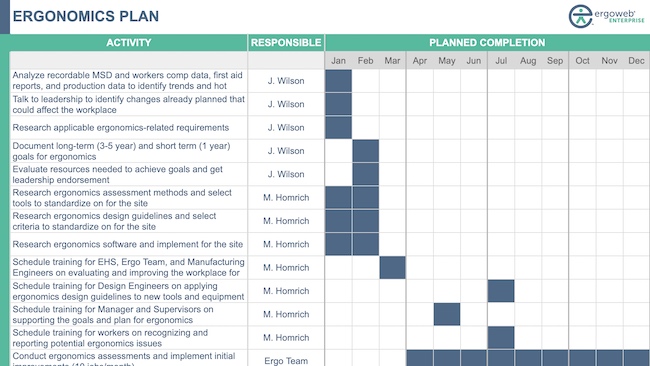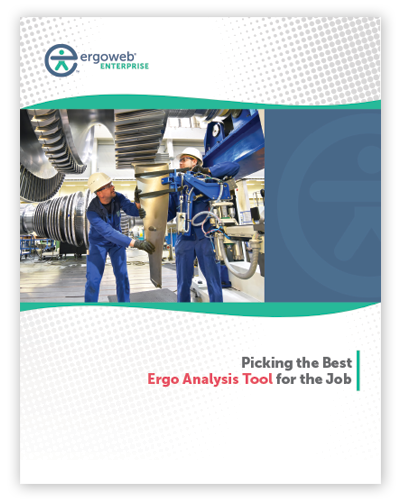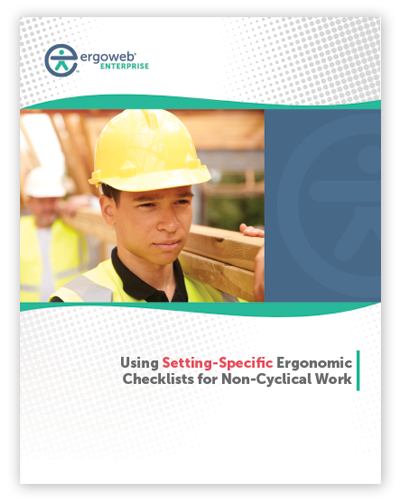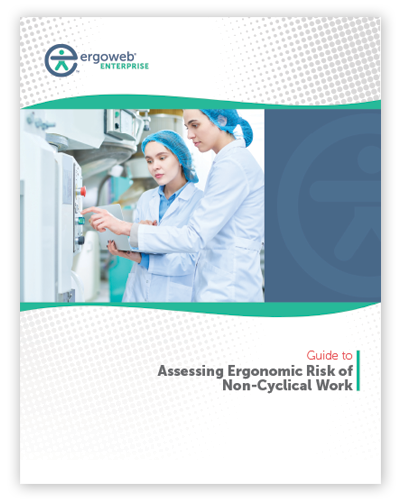Ergoweb® Learning Center
We’ve published and shared thousands of ergonomics articles and resources since 1993. Search by keyword or browse for topics of interest.
Downloadable Guides
Open Access Articles
October 10, 2019
Effective ergonomics processes emphasize both improvement and prevention – reducing ergonomics risks in existing operations while ensuring the ergonomics acceptability of new products and equipment. Ergonomic […]
September 26, 2019
Successful ergonomics improvement programs include at least these 4 steps: Identifying Potential Ergonomics Issues Ergonomics Assessment Tools Controlling Ergonomics Risks Cost Justifying Ergonomic Improvements If your […]
September 18, 2019
Successful workplace ergonomics programs drive improvements that reduce ergonomics risk while making jobs easier, effective and less painful for workers. Since Lean and Six Sigma programs […]
September 11, 2019
Successful ergonomics initiatives are designed to drive workplace ergonomics improvements that reduce risk while making jobs easier and less painful for workers. A robust approach that […]
July 18, 2019
What’s the difference between an ergonomics checklist and an ergonomics assessment tool, and when should one or the other be used? In general, they may seem […]
July 17, 2019
Ergonomics can be challenging, particularly when trying to assess ergonomics in non-repetitive (non-cyclical) jobs. Here we offer a few tips you can start using today. For […]
July 1, 2019
Ergonomics is an improvement process that, when successful, achieves meaningful outcomes such as less muscle fatigue, increased productivity, and reduced number and severity of work-related MSDs […]
June 20, 2019
What can you control? Improving ergonomics for field workers pays back by reducing risk exposure and improving job performance. This infographic captures the main things you […]
June 17, 2019
Ergonomics assessment of repetitive work – where the work area, materials, and tools are consistent and cycles are short enough that you can observe the activity […]






